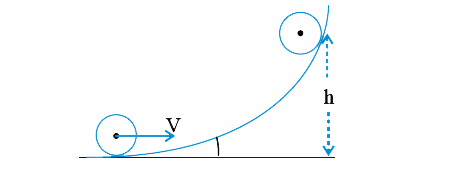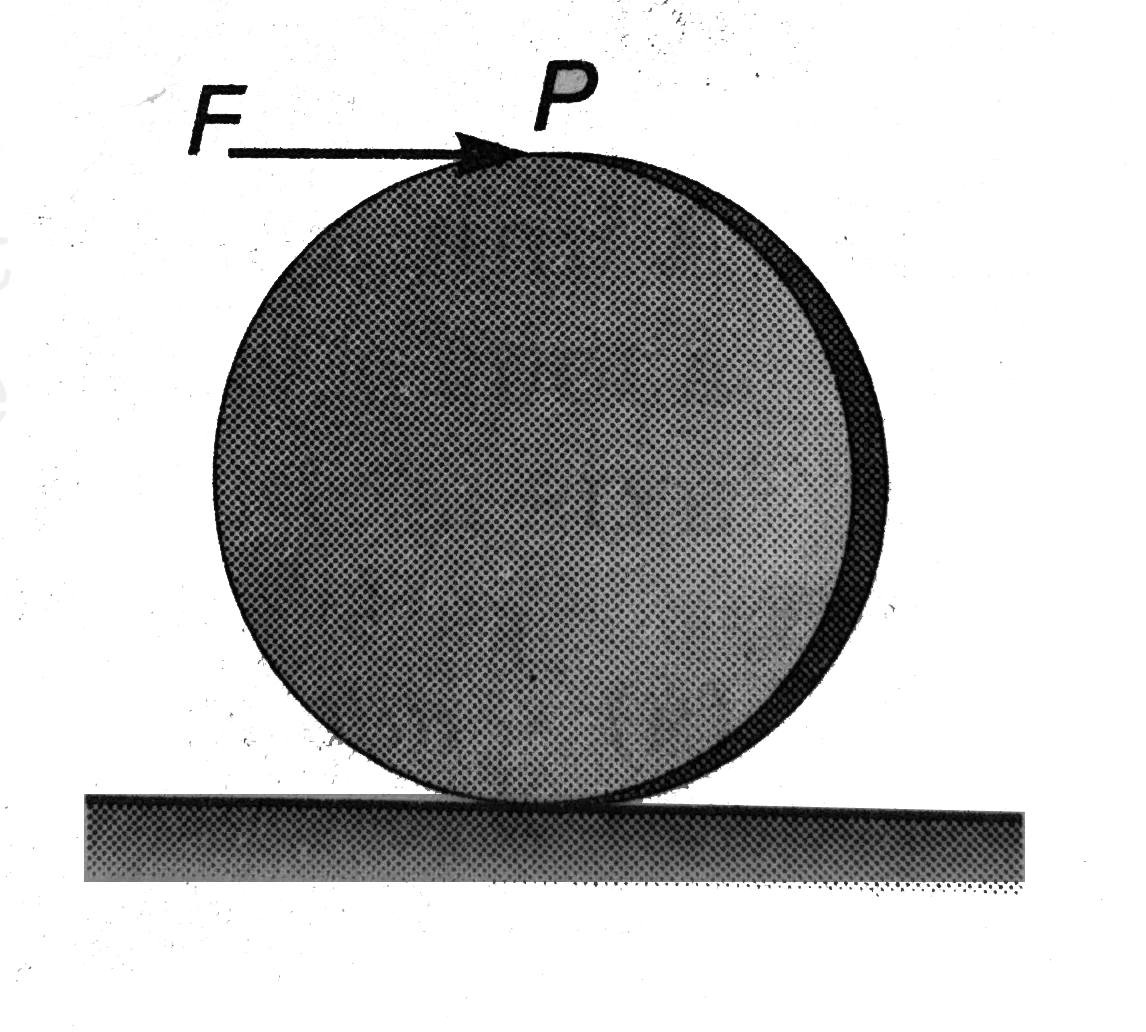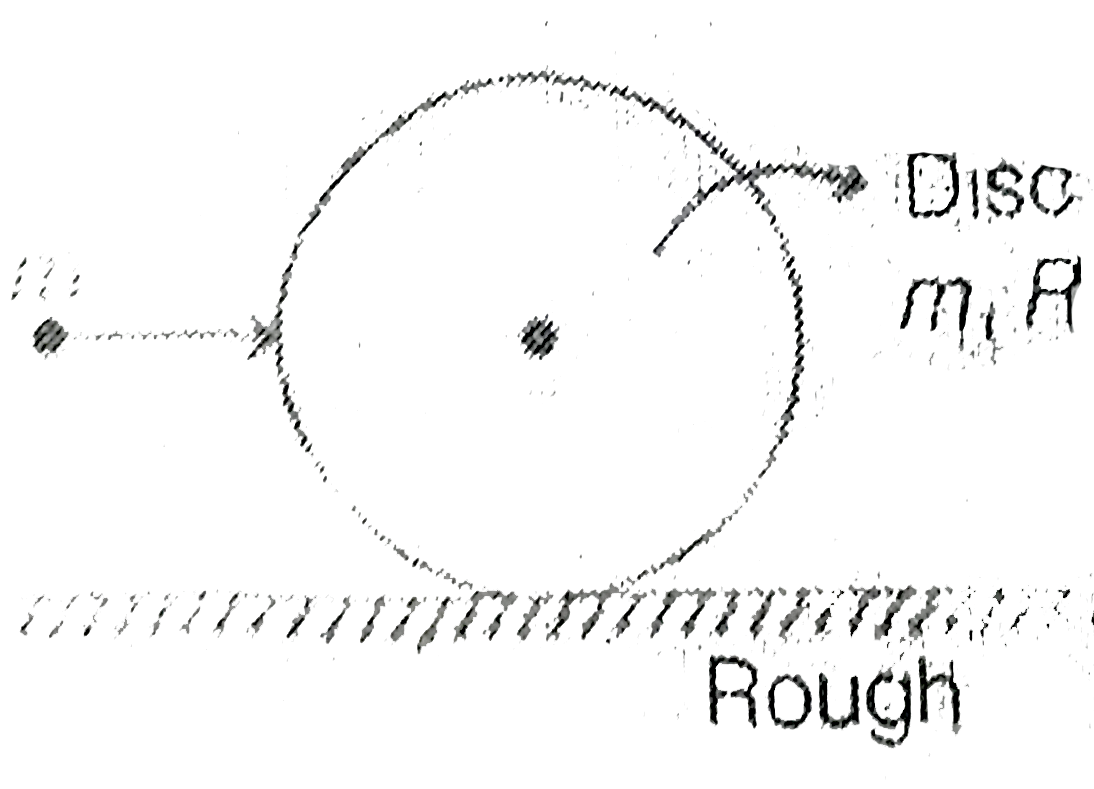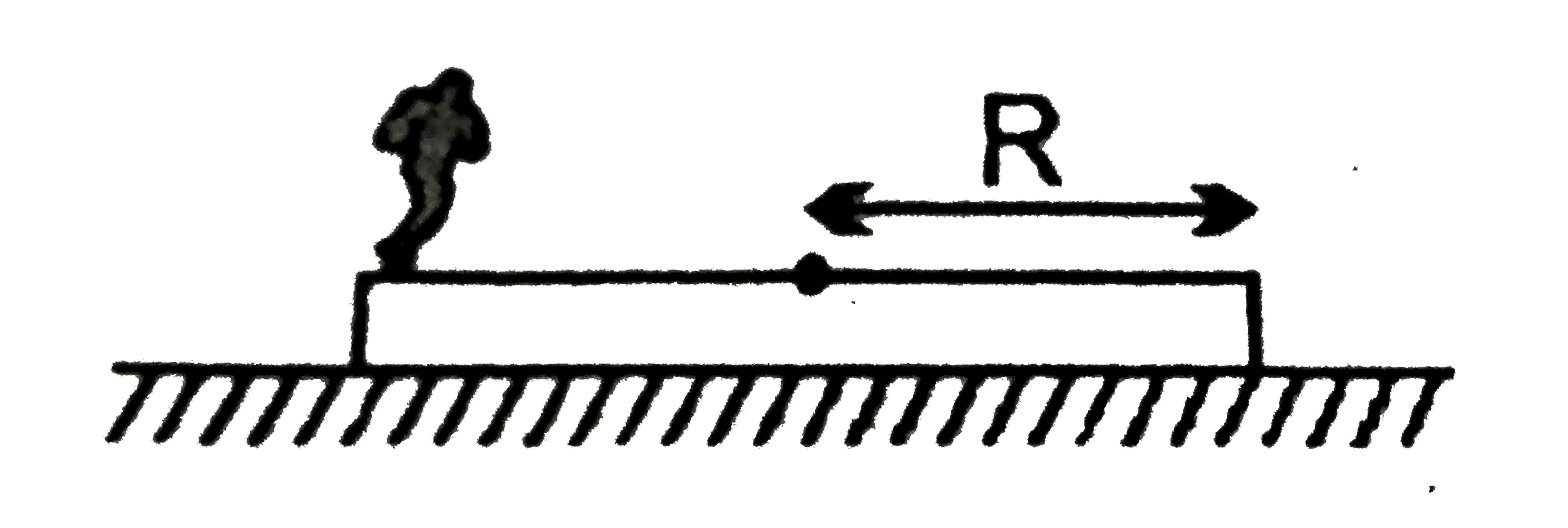A uniform disc of mass m and radius R is thrown on horizontal lawn in such a way that it initially slides with speed V0 without rolling. The distance travelled by the disc till it starts pure rolling is (Coefficient friction between the contact is 0.5)
v2_09g
5v2_09g
v2_03g
3v2_08g
The correct Answer is:B
To solve the problem, we need to determine the distance traveled by a uniform disc until it starts pure rolling after being thrown with an initial speed V0. The coefficient of friction between the disc and the surface is given as μ=0.5.
1. Understanding the System:
- The disc is initially sliding with speed V0 and not rolling.
- As it slides, friction will act on the disc, causing it to decelerate linearly and accelerate rotationally until it reaches pure rolling condition.
2. Friction Force:
- The friction force f acting on the disc can be calculated using the formula:
f=μmg
- Here, g is the acceleration due to gravity.
3. Linear Deceleration:
- The linear deceleration a of the disc due to friction is given by:
a=fm=μg
- Substituting μ=0.5:
a=0.5g
4. Angular Acceleration:
- The torque τ caused by the friction force about the center of the disc is:
τ=f⋅R=μmgR
- The angular acceleration α can be found using the moment of inertia I of the disc:
I=12mR2
- Thus, the angular acceleration is:
α=τI=μmgR12mR2=2μgR
5. Relation Between Linear and Angular Velocity:
- The condition for pure rolling is given by:
V=ωR
- Initially, the linear velocity V0 is reduced to V and the angular velocity ω increases from 0.
6. Using Kinematic Equations:
- We can use the kinematic equation:
V2=V20−2as
- Here, V=ωR and ω=VR.
- Since α=dωdt and a=dVdt, we can relate V and ω through the distance s.
7. Finding the Distance s:
- We know that:
V=23V0(from conservation of angular momentum)
- Substituting this into the kinematic equation:
(23V0)2=V20−2⋅(0.5g)⋅s
- Simplifying gives:
49V20=V20−gs
- Rearranging leads to:
gs=V20−49V20=59V20
- Therefore, the distance s is:
s=5V209g
Final Answer:
The distance traveled by the disc until it starts pure rolling is:
s=5V209g
- The disc is initially sliding with speed V0 and not rolling.
- As it slides, friction will act on the disc, causing it to decelerate linearly and accelerate rotationally until it reaches pure rolling condition.
- The friction force f acting on the disc can be calculated using the formula:
f=μmg
- Here, g is the acceleration due to gravity.
- The linear deceleration a of the disc due to friction is given by:
a=fm=μg
- Substituting μ=0.5:
a=0.5g
- The torque τ caused by the friction force about the center of the disc is:
τ=f⋅R=μmgR
- The angular acceleration α can be found using the moment of inertia I of the disc:
I=12mR2
- Thus, the angular acceleration is:
α=τI=μmgR12mR2=2μgR
- The condition for pure rolling is given by:
V=ωR
- Initially, the linear velocity V0 is reduced to V and the angular velocity ω increases from 0.
- We can use the kinematic equation:
V2=V20−2as
- Here, V=ωR and ω=VR.
- Since α=dωdt and a=dVdt, we can relate V and ω through the distance s.
- We know that:
V=23V0(from conservation of angular momentum)
- Substituting this into the kinematic equation:
(23V0)2=V20−2⋅(0.5g)⋅s
- Simplifying gives:
49V20=V20−gs
- Rearranging leads to:
gs=V20−49V20=59V20
- Therefore, the distance s is:
s=5V209g
The distance traveled by the disc until it starts pure rolling is:
s=5V209g
Similar Questions
A solid sphere is thrown on a horizontal rough surface with initial velocity of centre of mass V0 without rolling. Velocity of its centre of mass when its starts pure rolling is
View SolutionA heavy solid sphere is thrown on a horizontal rough surface with initial velocity u without rolling. What will be its speed, when it starts pure rolling motion ?
View SolutionA disc of mass 4.8 kg and radius 1 m is rolling on a horizontal surface without sliding with angular velocity of 600 rotations/min. What is the total kinetic energy of the disc ?
View SolutionUniform solid cylinder of mass m and radius R is placed on a rough horizontal surface. A horizontal constant force is applied at the top point P of the cylinder so that it start pure rolling .In the above question, the frictional force on the cylinder is
View SolutionA disc of mass M and radius R rolls on a horizontal surface and then rolls up an inclined plane as shown in the figure. If the velocity of the disc is v, the height to which the disc will rise will be:

View Solution
A uniform solid cylinder of mass m and radius R is placed on a rough horizontal surface. A horizontal constant force F is applied at the top point P of the cylinder so that it start pure rolling. The acceleration of the cylinder is
View SolutionA uniform disc of mass m and radius R is projected horizontally with velocity v0 on a rough horizontal floor so that it starts off with a purely sliding motion at t=0. After t0 seconds, it acquires pure rolling motion as shown in the figure.
(a) Calculate the velocity of the center of mass of the disc at t0.
Assuming that the coefficent of friction to be μ, calculate t0.

View SolutionA point mass m collides with a disc of mass m and radius R resting on a rough horizontal surface as shown . Its collision is perfectly elastic. Find angular velocity of the disc after pure rolling starts

View SolutionA uniform circular disc of mass m is set rolling on a smooth horizontal table with a uniform linear velocity v. Find the total K.E. of the disc.
View SolutionA uniform disc of mass 'm' and radius R is placed on a smooth horizontal floor such that the plane surface of the disc in contact with the floor . A man of mass m/2 stands on the disc at its periphery . The man starts walking along the periphery of the disc. The size of the man is negligible as compared to the size of the disc. Then the center of disc.

View Solution
